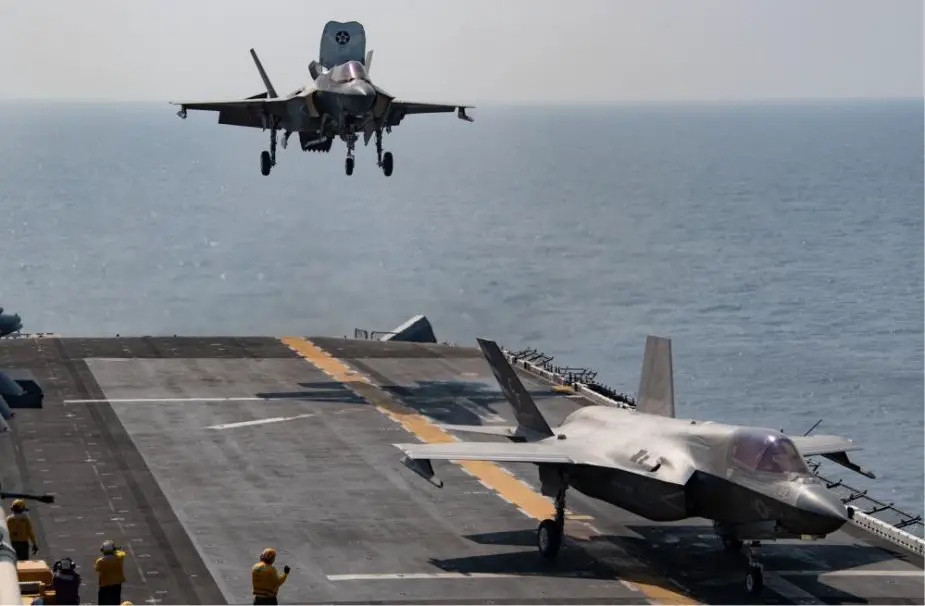Breaking news
Flight operations between US Navy's USS Essex and HMS Queen Elizabeth.
According to information published by the U.S. Department of Defense on November 9, 2021, the amphibious assault ship USS Essex (LHD 2) and 11th Marine Expeditionary Unit (MEU) conducted bilateral interoperability training with the Royal Navy’s aircraft carrier HMS Queen Elizabeth (R 08) and embarked Marine Fighter Attack Squadron (VMFA) 211 in the Gulf of Oman.
Follow Navy Recognition on Google News at this link
 F-35B Lightning II deployed with the Royal Navy aircraft carrier HMS Queen Elizabeth lands on the flight deck of the amphibious assault ship USS Essex during an exercise (Picture source: U.S. DoD)
F-35B Lightning II deployed with the Royal Navy aircraft carrier HMS Queen Elizabeth lands on the flight deck of the amphibious assault ship USS Essex during an exercise (Picture source: U.S. DoD)
VMFA-211 cross-decked F-35B Lightning II’s from HMS Queen Elizabeth to Essex displaying the strategic advantage of the United Kingdom’s Carrier Strike Group as well as the integration of the F-35Bs. VMFA-211’s F-35B Standard Take-off and Vertical Landing (SVOTL) capabilities make them uniquely qualified to support distributed maritime operations.
In addition to the F-35Bs, the Royal Navy cross-decked Merlin MK4’s, attached to 845 Naval Air Squadron (NAS), accomplishing routine deck landings aboard Essex.
UH-1Y Venoms and MV-22B Ospreys, attached to Marine Medium Tiltrotor Squadron (VMM) 165 (Reinforced), 11th Marine Expeditionary Unit (MEU), conducted cross-deck landings on HMS Queen Elizabeth.
The Bell UH-1Y Venom is a twin-engine, medium-sized utility helicopter, built by Bell Helicopter under the H-1 upgrade program of the United States Marine Corps. In 2008 it entered full-rate production, with deliveries to the Marines completed in 2018. The Bell UH-1Y Venom can be armed with 70mm rockets. The machine guns selected for the UH-1Y are the M-240D, GAU-16, and GAU-17A.
The Bell UH-1Y Venom is powered by two General Electric T700-GE-401C engines which provide a maximum continuous power of 1,546shp.


























